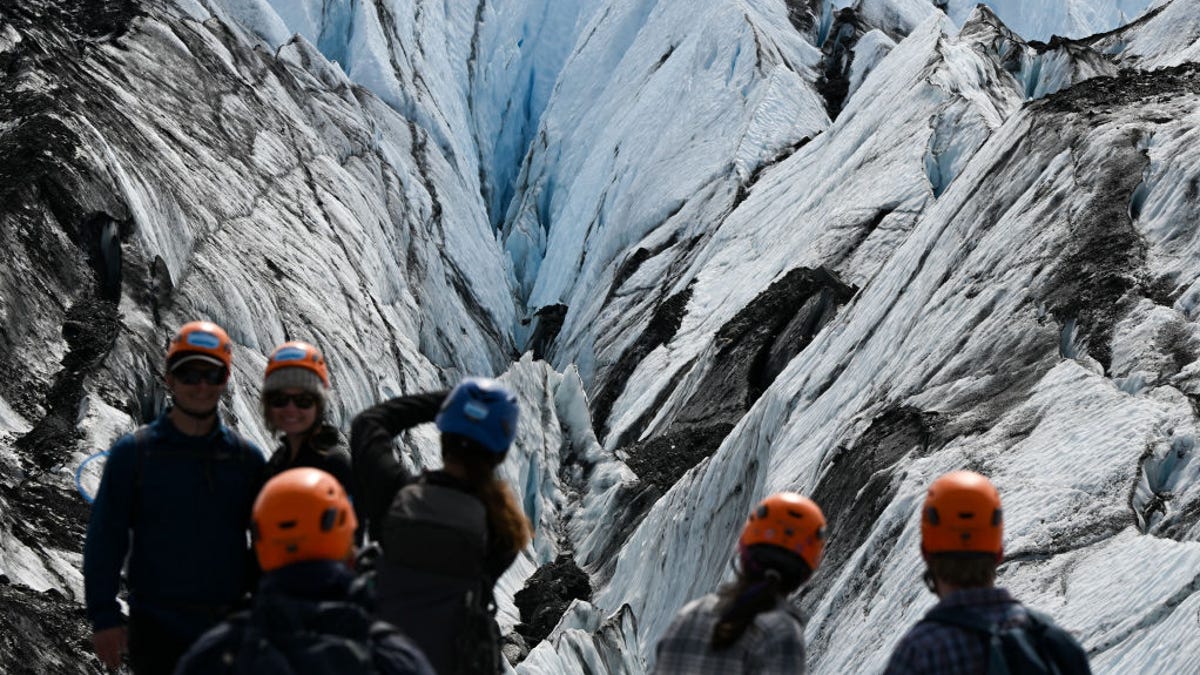Travel
What’s happening to Alaska’s glaciers and how it could impact your trip

Alaskan glacial lake outburst prompts evacuations, floods communities
A glacial lake outburst flooded communities in the capital of Alaska with 16 feet of water.
Climate change is drastically impacting the world around us, including the way people travel and the destinations themselves. “Green Travel” is a seven-part series delving into how climate change is transforming the landscape of travel. If you’d like to contribute to our future reporting and share your experience as a source, you can click here to fill out this quick form.
When travelers visit Alaska, they often want to see glaciers.
And it’s the perfect place for those.
The Last Frontier is home to the most glaciers in the U.S. There are roughly 27,000 glaciers across the state, covering an area of about 80,000 square kilometers, according to Louis Sass, an Anchorage-based glaciologist with the Alaska Science Center U.S. Geological Survey.
“That’s about the same amount of area as the state of South Carolina or Lake Superior,” he said.
That’s huge, yet not as big as it used to be.
“Globally, most glaciers are melting and thinning and retreating much faster now than they were, say, prior to about the year 2000,” Sass said.
Here’s what that means for travelers hoping to see glaciers in Alaska and elsewhere.
What causes melting of glaciers?
It’s natural for glaciers to melt.
“You can really just think of a glacier as a huge conveyor belt that takes snow and ice from up high, where it can’t melt, down to low elevations where it’s a lot warmer and it does melt.”
It’s the rate of melting and thinning that’s shifted dramatically.
Research published in July in the peer-reviewed British journal Nature Communications, found the rates of glacier area shrinkage in Alaska’s Juneau icefield were five times faster from 2015 to 2019 than from 1948 to 1979.
A National Park Service report on Alaska’s glaciers noted glaciers within Alaska national parks shrank 8% between the 1950s and early 2000s and glacier-covered area across the state decreased by 13% between 1985 and 2020.
“These systems are under threat,” said Brice Esplin, Director of Sustainable Tourism and Partnerships at Leave No Trace. “Climate change is affecting them.”
While Sass did not identify climate change by name, noting he’s not a climate scientist, he said glaciers are very sensitive to inputs like temperature and precipitation.
“Temperature has kind of a double whammy, because air temperature can change the phase of the precipitation, so more of the precipitation that falls out of the sky can actually be rain instead of snow. And rain tends to run off the glacier and not add to the glacier mass,” he said.
The U.S. Department of Agriculture’s Northwest Climate Hub notes Alaska is “warming at two to three times the rate of the global average.”
National parks ask us to Leave No Trace: Here’s what that actually means
What is happening to the glaciers in Alaska?
“Some glaciers are advancing, but the vast majority of them are shrinking, and at Kenai Fjords (National Park), you can just see that right up close and personal,” Peter Christian, chief spokesperson for Public Affairs for the National Park Service’s Alaska region, said last year during USA TODAY’s more than yearlong national park series.
An area of the park where that’s especially pronounced is Exit Glacier.
“It literally is changing yearly. If you went back from one year to the next, you could see how far the glacier has continued to retreat up into the mountains,” he said, noting that the Park Service has signs set up along the trail to the glacier, marking the changes.
Matanuska Glacier, about 100 miles from Anchorage, is another example.
“It’s only retreated a little bit. It’s actually very close to where it was even 120 years ago, but it has thinned a lot, and it’s actually really easy to see that thinning,” Sass said. “The ice is just sort of deflated as it loses mass and it melts.”
Matanuska Glacier is the state’s largest glacier accessible by road, according to Alaska’s official travel arm, Travel Alaska, but Sass said it used to be even easier to reach.
“There’s all these sort of little melt puddles right along the edge of the glacier that are getting bigger and bigger and harder to cross, and there’s more and more mud to try to get out to the ice,” he said. “It used to be, on Matanuska Glacier, you basically walked from the parking lot onto clean, white ice.”
He added that many tidewater glaciers have also been impacted.
“So even big cruise ships that are trying to take passengers up to see calving glaciers, they have to go further up the inlet to actually be able to see a calving glacier,” he said. “Places that used to have a really good view of a glacier sometimes don’t have a good view anymore, and so it gets generally more and more challenging to get to those places where you can kind of experience the same level of glacier.”
Where can you see a glacier?
From Wrangell-St. Elias National Park and Preserve, home of the most glaciers of any national park, to Mendenhall Glacier, which is protected by the U.S. Forest Service, there are so many places to see glaciers in Alaska.
They can also be found in Glacier National Park in Montana, Grand Teton National Park in Wyoming, Mount Rainier National Park in Washington, and elsewhere around the West and the world.
“It’s important for people to see these amazing natural systems, because they create that appreciation, that love and that connection of nature and for the in the future,” Esplin said.
He encourages travelers to experience glaciers close to home, when possible.
“We have one glacier in my state in Great Basin National Park, and it’s shrinking rapidly. It probably won’t last the next 20 years,” he said. “Right now, that’s a short drive for me to go see a glacier, appreciate it before it’s gone.”
But he also understands the desire to behold glaciers far away, having recently visited Alaska himself and seen a handful of glaciers over several weeks.
“We want to think about really making sure that we’re choosing sustainable methods to visit these these areas,” he said. “If we did have to use airline fuel and burn that carbon to get up there, at least we’re staying for longer.”
What to know before visiting a glacier
“There have to be hundreds, if not thousands of opportunities up here in Alaska to see glaciers,” Sass said, encouraging people to “go see a glacier in a way that makes sense for them.”
That may be appreciating them from afar by land, air or sea or getting up close with a guided tour.
“We don’t expect people to hover above the ground and never interact with the natural world around us,” Esplin said. “It’s all a balancing act, a balancing act of humans being a part of nature, but also not destroying it entirely.”
For travelers who want to get up close, Esplin shared these Leave No Trace-based tips:
- Plan ahead and prepare: “Usually that includes booking a guide service. It’s never recommended for anyone without sufficient training or expertise to go out on glaciers, as they’re constantly moving. They have crevasses, snow bridges and moulins. They’re usually (in) pretty remote environments as well, so that that safety aspect is one of the most important parts of interacting with glaciers.”
- Be mindful of where you tread. “We can affect the vegetation on the sides and really promote erosion in areas if we’re not utilizing trails or durable surfaces to get on and off that glacier.
- Pack out all waste, including food waste and human waste “so that it’s not being left behind to pollute that water source, that special place.”
- Remember wildlife. “They use (glaciers) to travel in between places… Even though you feel like you might be on an isolated world, wildlife can still be out there.”
Contributing: Doyle Rice, USA TODAY









